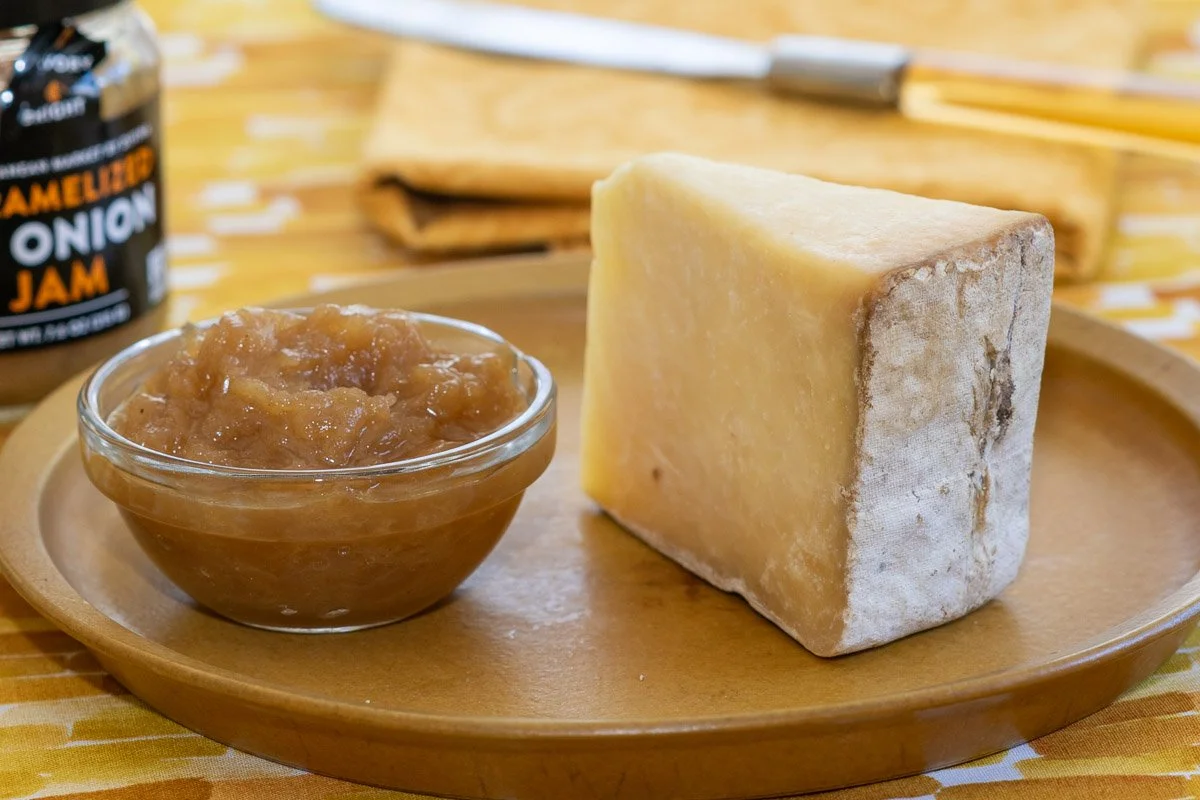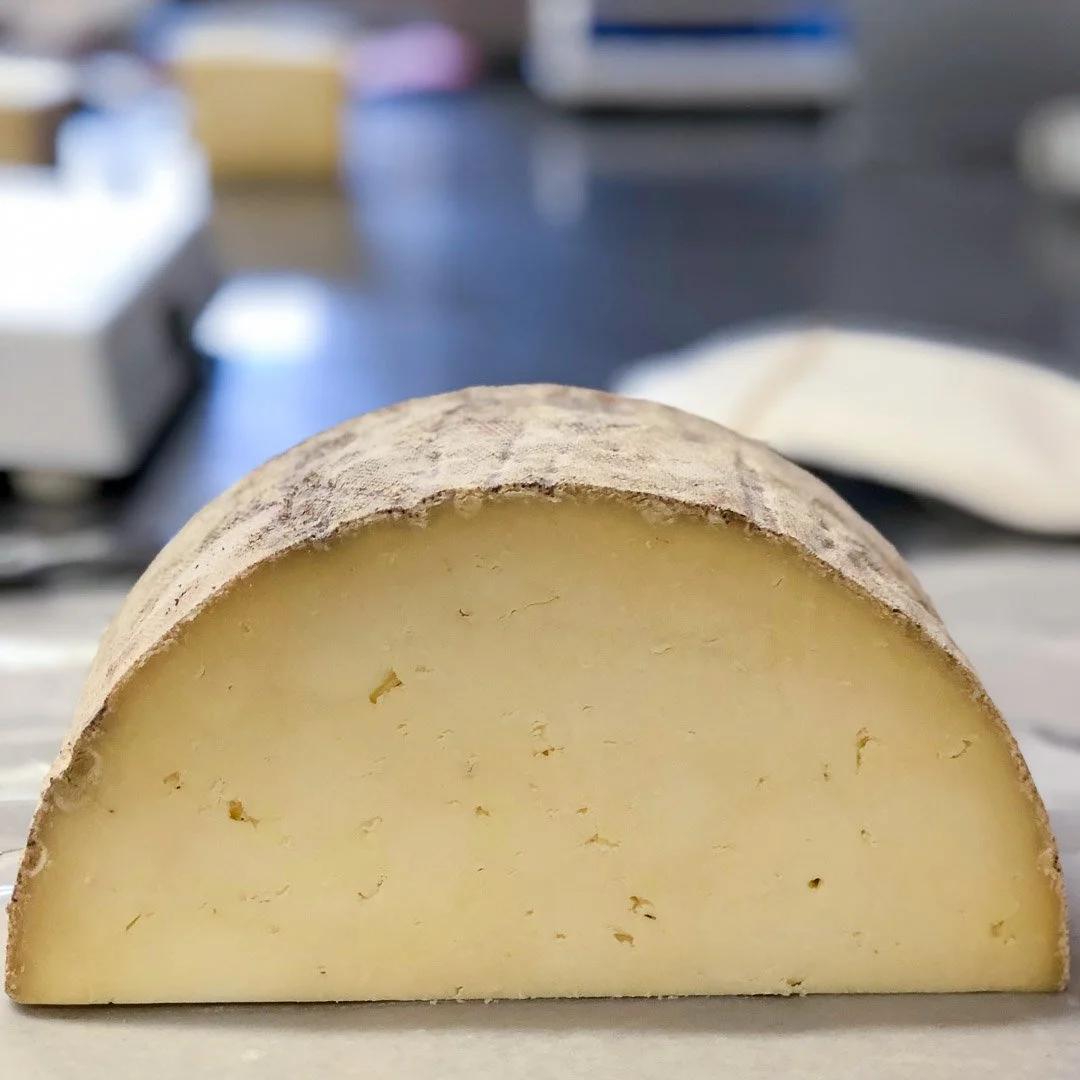Even well-known cheeses with long histories can vanish if people stop making them. Traditional Wensleydale has been on the brink more than once. But now this centuries-old British cheese is experiencing a mini-revival, with a handful of artisan producers hoping to save it from a purely industrial fate. I had never heard of Yoredale Wensleydale (pictured above) until I started hunting for some interesting selections for a recent class. Debuting in 2022, the lovely Yoredale won a gold medal at last year’s British Cheese Awards, and the couple who make it have already outgrown their micro-creamery. If you’ve never had a clothbound raw-milk Wensleydale—a rarity even now—you are in for a treat.
The original Wensleydale was likely a blue cheese, produced by French monks from the Roquefort area who settled in Yorkshire almost 900 years ago. Today it is closer to Cheddar, both high-acid cheeses with a creamy yet crumbly texture. The recipes are similar, although Wensleydale curds are not heated as much, or sometimes not heated at all, so the resulting cheese is moister. As with traditional Cheddar, the curds are milled and salted by hand, then transferred to forms and pressed. The young truckles—taller than they are wide--are wrapped in buttered cheesecloth, then aged on wooden shelves to develop a rind.
British beauty: Yoredale Wensleydale
Yoredale is roughly a quarter the size of a 60-pound clothbound Cheddar like Montgomery’s, so three to four months is sufficient time to build character. I’ve tried the cheese twice now, from different wheels, and they were indeed different experiences.
What I noticed immediately in the first sample was a buttery aroma, like cultured butter melting in a skillet. The flavor was buttery as well, with the lemon yogurt notes that the creamery’s website describes. I made nuggets with a Parm knife because the cheese was too crumbly to slice. Bottom line: delicious.
The second sample, purchased a few days later, seemed older, like it had been trapped in plastic wrap too long. It was creamier, stronger and earthier, with more pronounced salt. When I realized I still had the store label, I checked the packed-on date: 13 days prior to my purchase. No wonder this wedge was not its best self.
Cheese check: Yoredale maker Sam Spence
Katy Fenwick, technical director for the Academy of Cheese in the U.K., shared her tasting notes for Yoredale, one of three new clothbound Wensleydales made by hand with raw milk. Of the three, Yoredale is “probably the most ‘Wensleydale-like’,” she wrote. “It’s quite bright and lemony with a cultured butter finish.” She describes the texture as “fluffy,” albeit a bit fudgier under the rind. Her notes accord with the first Yoredale I tasted.
In 2019, Ben and Sam Spence, the couple behind Yoredale, traded city jobs in finance for a quieter life on Ben’s family farm in Wensleydale. Three years later, they opened their miniature creamery. Surprisingly, they got a lot of guidance and encouragement from Wensleydale Creamery, an industrial producer. Demand has been strong enough to fund a bigger facility, now under construction.
Neal’s Yard Dairy, the exporter, has been a cheerleader for these “new” Wensleydales and other traditional British cheeses with threatened futures. A short film produced by Neal’s Yard takes viewers into the creameries and aging cellars of the new Wensleydale makers. Yoredale is not inexpensive by the time it gets to the U.S., but the small scale and hand methods in part explain why.
Look for Yoredale Wensleydale at the following retailers:
Antonelli’s (Austin, TX)
Cheese Parlor (Livermore, CA)
Cheese Plus (SF)
De Laurenti (Seattle)
Di Bruno Brothers (Philadelphia)
Fairfield Cheese Company (Fairfield, CT)
Formaggio Kitchen (Cambridge and Boston)
France 44 (Minneapolis)
Guido's Fresh Marketplace (Great Barrington and Pittsfield, MA)
Rainbow Grocery (SF)
St James Cheese Company (New Orleans)
Street Cheese (Seattle)
Wine Source (Baltimore)
Zingerman’s (Ann Arbor)



